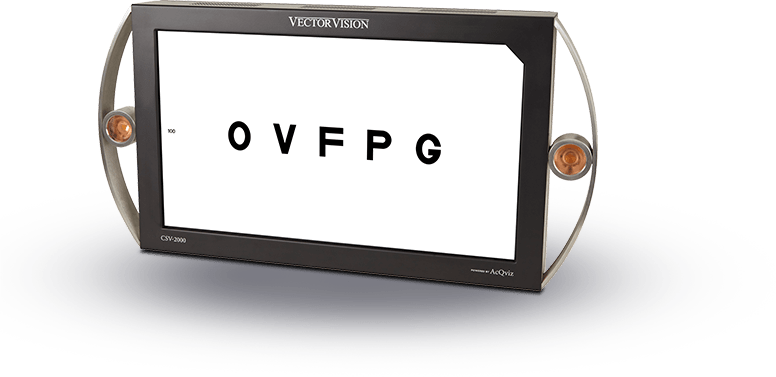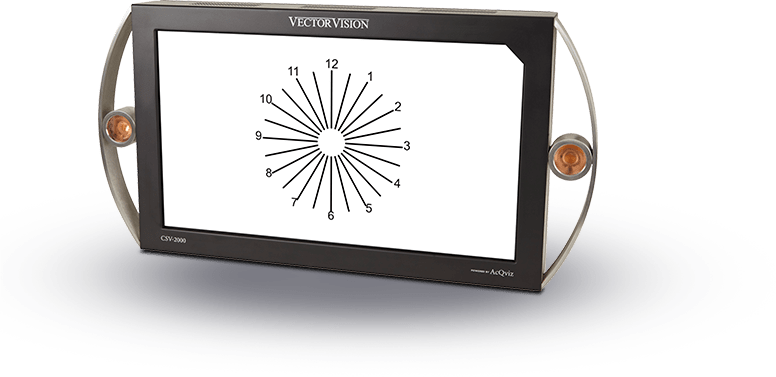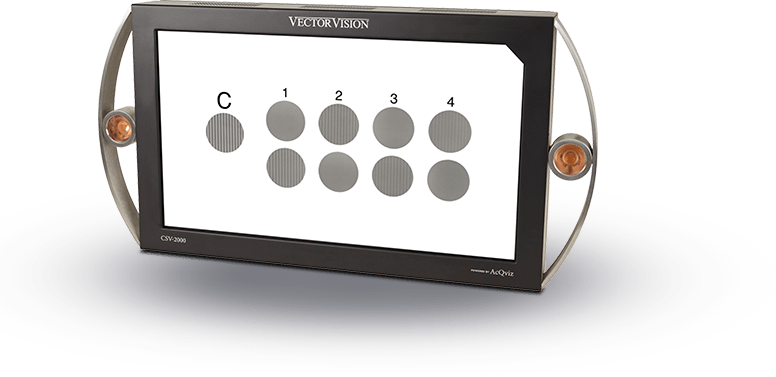Clinical Use of Glare Testing – Cataracts, PCO and Sports Vision
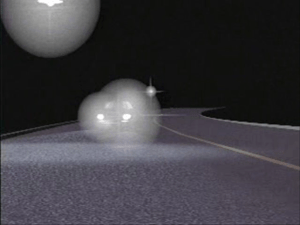
Glare testing is very useful for quantifying vision loss associated with light scatter. A lens opacity caused by cataracts or a corneal scar can cause incoming light to the eye to scatter, showering stray light rays across the retina. This light scatter reduces image contrast. In many cases, patients who have significant losses in vision due to light scatter are able to retain good acuity because standard acuity tests vision using high contrast black-on-white letters. Although the light scatter causes the letters to appear washed out, patients can still read them. When glare is combined with contrast sensitivity using the CSV-2000 or the CSV-1000HGT, the loss in vision caused by light scatter can be objectively quantified.
Learn more about the CSV-2000 and CSV-1000HGT standardized glare tests, including testimonials. Click Here
Measure Vision Loss Related to Glare for Cataracts
To assess the level of vision loss caused by glare (ie, due to light scatter) it is best to test the patient contrast sensitivity first without the glare source, and then again with the glare source activated. The loss in vision that occurs under the glare condition, compared to the non-glare conditions, provides an accurate documentation of the real-world vision loss due to cataracts and other opacities in the optical path. The loss in vision can be used to establish a functional acuity score for cataract patients.
How to Use Contrast Sensitivity and Glare to Document Cataract Vision Loss
Glare Testing Prior to YAG Capsulotomy
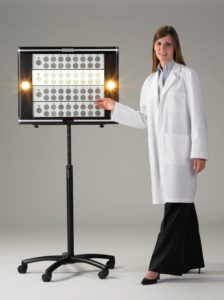
Glare testing can be used to verify the vision loss associated with clouding of the posterior capsule (posterior capsule opacification or PCO) after cataract surgery. Patients can be quickly tested with and without glare to determine if the PCO is causing sufficient light scatter to be debilitating for the patient. The functional acuity score can be used to describe the vision loss caused by the PCO and to document the need for the YAG procedure.
Sports Vision Evaluation
The CSV-2000 and CSV-1000HGT can also be used for sports vision testing to help athletes evaluate the best types of sunglasses (eg for a baseball or tennis player) or goggles (eg for a competitive skier) to wear to maximize visual performance. The glare levels necessary to evaluate sunglasses or goggles are higher than those used for cataract evaluation and must be adjusted by the practitioner during testing. For example, to evaluate the visual performance provided by sunglasses under specific glare conditions, have the athlete wear various pairs of sun glasses and administer the glare test with glare adjusted to the highest level. Record which type of sunglasses provides the best contrast sensitivity under glare conditions.
Standardization
The CSV-2000 and CSV-1000HGT are the only fully auto-calibrating standardized glare test devices. The patented circuitry automatically calibrates the testing light level and the glare source ensuring that the test results are consistent and can be used for documentation. This standardization is unlike other types of glare tests which use non-calibrated light sources. The glare source is automatically calibrated at the factory for the light level recommended for cataract documentation.
Testing Procedure
The CSV-1000HGT is designed to be tested from an 8-foot viewing distance. This allows the instrument to be placed on the wall or on a rolling floor stand in the examination room.
The CSV-2000 uses a computer-based testing system, which allows the adjustment of testing distance from 6 to 16 feet. The device can rest on a table, hang from the wall or be placed on a rolling floor stand. The software also allows the device to be set up for a mirrored view.
Both devices are designed to test contrast sensitivity at a distance, which allows testing the patient through the phoropter. Viewing through a phoropter makes it much easier to evaluate glare sensitivity for patients using best correction, as compared to hand-held glare devices or the look-in devices, which require trial frames.
Featured Product
CSV-2000
CSV-2000 The first and only all-in-one digital vision testing device that offers the full range of vision tests, along with STANDARDIZED contrast sensitivity, glare and visual acuity.
Over the last 20 years, VectorVision testing equipment has become the worldwide benchmark for standardized contrast sensitivity, glare and ETDRS acuity testing.
Read our Reviews


